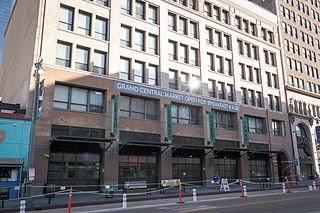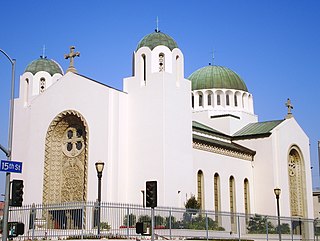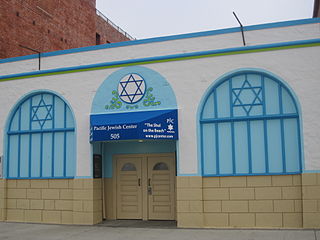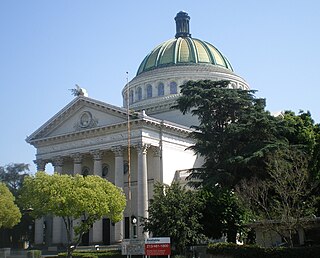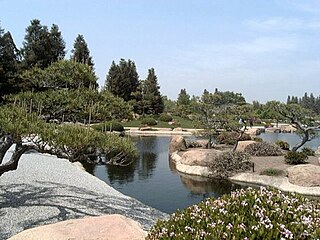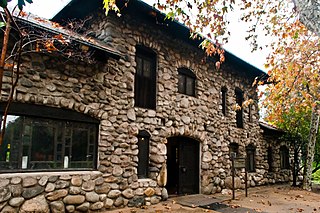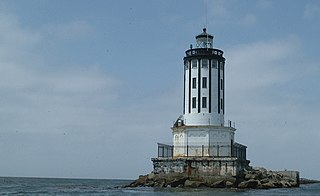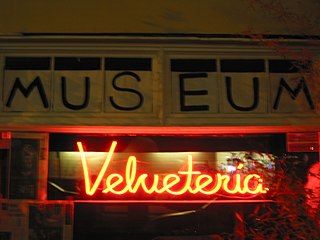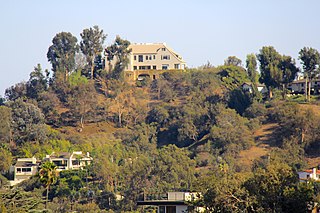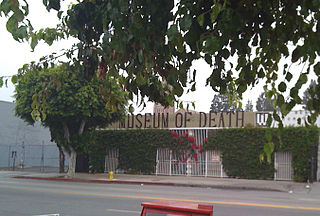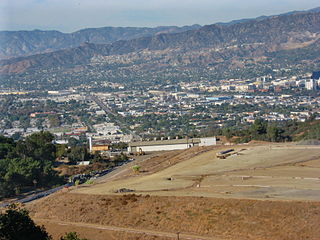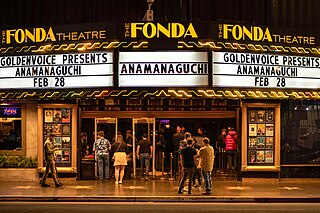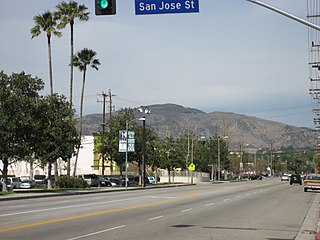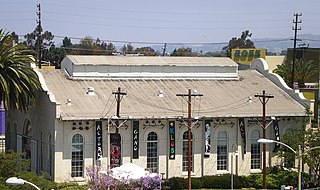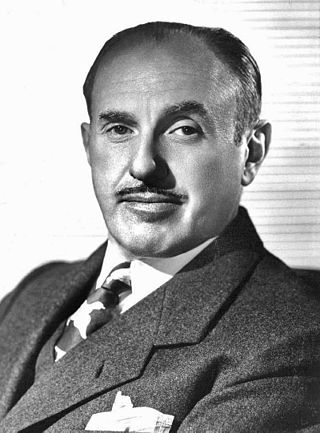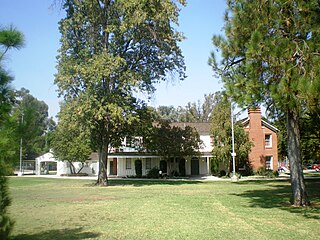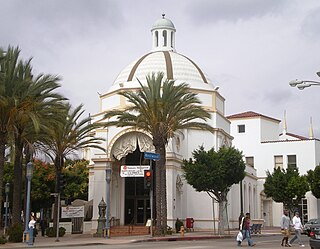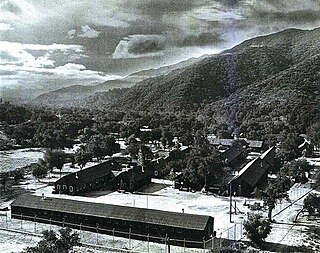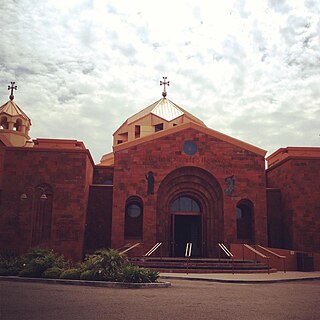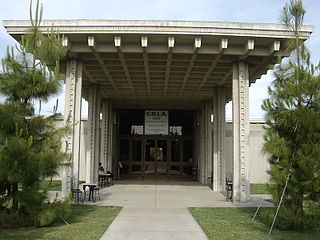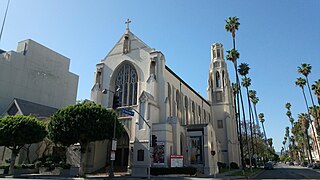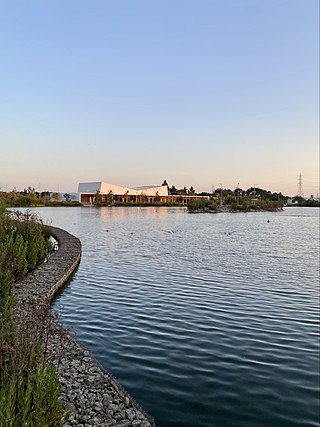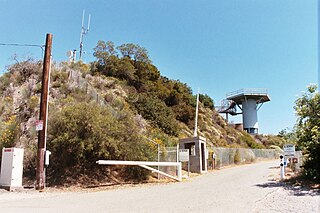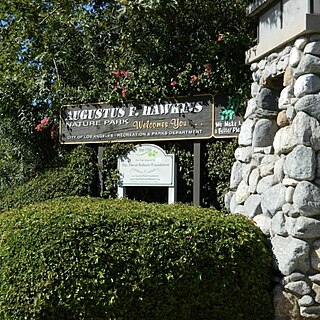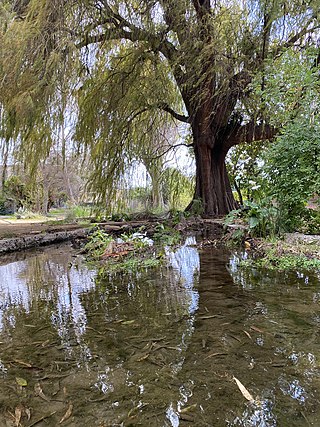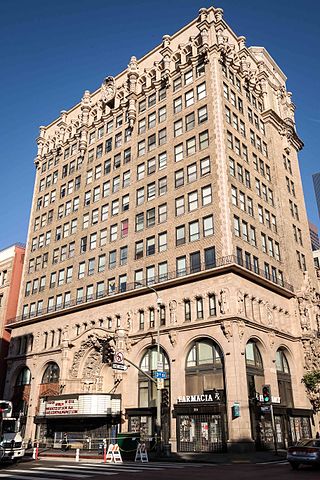87 Sights in Los Angeles, United States (with Map and Images)
Legend
Welcome to your journey through the most beautiful sights in Los Angeles, United States! Whether you want to discover the city's historical treasures or experience its modern highlights, you'll find everything your heart desires here. Be inspired by our selection and plan your unforgettable adventure in Los Angeles. Dive into the diversity of this fascinating city and discover everything it has to offer.
Sightseeing Tours in Los Angeles1. Walk of Fame

The Hollywood Walk of Fame is a landmark which consists of 2,800 five-pointed terrazzo-and-brass stars embedded in the sidewalks along 15 blocks of Hollywood Boulevard and three blocks of Vine Street in the Hollywood district of Los Angeles. The stars, the first of which were permanently installed in 1960, are monuments to achievement in the entertainment industry, bearing the names of a mix of actors, musicians, producers, directors, theatrical/musical groups, fictional characters, and others.
2. Hollywood Sign
The Hollywood Sign is an American landmark and cultural icon overlooking Hollywood, Los Angeles. Originally the Hollywoodland Sign, it is situated on Mount Lee, above Beachwood Canyon in the Santa Monica Mountains. Spelling out the word "HOLLYWOODLAND" in 50-foot-tall (15.2 m) white uppercase letters and 450 feet long, it was originally erected in 1923 as a temporary advertisement for a local real estate development. Due to increasing recognition, the sign was left up, with the last four letters "LAND" removed in 1949. The sign was entirely replaced in 1978 with a more durable all-steel 45-foot-tall (13.7 m) structure and concrete footings.
3. The Playboy Mansion
The Playboy Mansion, also known as the Playboy Mansion West, is the former home of Playboy magazine founder Hugh Hefner, who lived there from 1971 until his death in 2017. Barbi Benton convinced Hefner to buy the home located in Holmby Hills, Los Angeles, California, near Beverly Hills. From the 1970s onward, the mansion became the location of lavish parties held by Hefner which were often attended by celebrities and socialites. It is currently owned by Daren Metropoulos, the son of billionaire investor Dean Metropoulos, and is used for corporate activities. It also serves as a location for television production, magazine photography, charitable events, and civic functions.
4. La Brea Tar Pits and Museum
La Brea Tar Pits is an active paleontological research site in urban Los Angeles. Hancock Park was formed around a group of tar pits where natural asphalt has seeped up from the ground for tens of thousands of years. Over many centuries, the bones of trapped animals have been preserved. The George C. Page Museum is dedicated to researching the tar pits and displaying specimens from the animals that died there. La Brea Tar Pits is a registered National Natural Landmark.
5. Hollywood Bowl
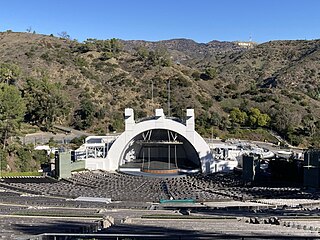
The Hollywood Bowl is an amphitheatre and public park in the Hollywood Hills of Los Angeles, California, United States. It was named one of the 10 best live music venues in the United States by Rolling Stone magazine in 2018. It was listed on the National Register of Historic Places in 2023.
6. Hollywood High School
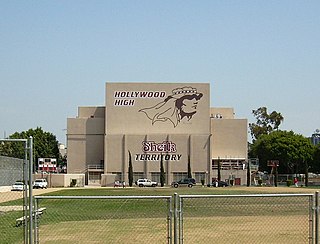
Hollywood High School is a four-year public secondary school in the Los Angeles Unified School District, located at the intersection of North Highland Avenue and West Sunset Boulevard in the Hollywood district of Los Angeles, California.
7. Bradbury Building
The Bradbury Building is an architectural landmark in downtown Los Angeles, California, United States. Built in 1893, the five-story office building is best known for its extraordinary skylit atrium of access walkways, stairs and elevators, and their ornate ironwork. The building was commissioned by Los Angeles gold-mining millionaire Lewis L. Bradbury and constructed by architect George Wyman from the original design by Sumner Hunt. It appears in numerous works of fiction and has been the site of many movie and television shoots and music videos.
8. Angels Flight
Angels Flight is a landmark and historic 2 ft 6 in narrow gauge funicular railway in the Bunker Hill district of Downtown Los Angeles, California. It has two funicular cars, named Olivet and Sinai, that run in opposite directions on a shared cable. The tracks cover a distance of 298 feet (91 m) over a vertical gain of 96 feet (29 m).
9. The Groundlings
The Groundlings is an American improvisational and sketch comedy troupe and school based in Los Angeles, California. The troupe was formed by Gary Austin in 1974 and uses an improv format influenced by Viola Spolin, whose improv techniques were taught by Del Close and other members of the Second City, located in Chicago and later St. Louis. They used these techniques to produce sketches and improvised scenes. Its name is taken from Shakespeare's Hamlet, Act III, Scene II: "...to split the ears of the groundlings, who for the most part are capable of nothing but inexplicable dumbshows and noise." In 1975 the troupe purchased and moved into its location on Melrose Avenue.
10. Dolby Theatre
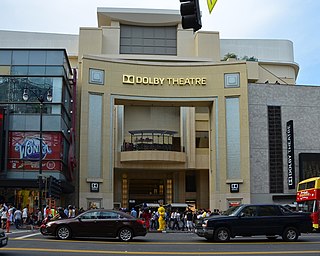
The Dolby Theatre is a live-performance auditorium in the Ovation Hollywood shopping mall and entertainment complex, on Hollywood Boulevard and Highland Avenue, in the Hollywood neighborhood of Los Angeles, California, United States. Since its opening on November 9, 2001, it has been the venue of the annual Academy Awards ceremony. It's adjacent to Grauman's Chinese Theatre and across from the El Capitan Theatre on Hollywood Boulevard.
11. MacArthur Park
MacArthur Park is a park dating back to the late 19th century in the Westlake neighborhood of Los Angeles. In the early 1940s, it was renamed after General Douglas MacArthur, and later designated City of Los Angeles Historic Cultural Monument #100.
12. Los Angeles Zoo

The Los Angeles Zoo and Botanical Gardens is a 133-acre (54 ha) zoo founded in 1966 and located in Los Angeles, California, United States. The city of Los Angeles owns the zoo, its land and facilities, and the animals.
13. Museum of Contemporary Art
The Museum of Contemporary Art, Los Angeles (MOCA) is a contemporary art museum with two locations in greater Los Angeles, California. The main branch is located on Grand Avenue in Downtown Los Angeles, near the Walt Disney Concert Hall. MOCA's original space, initially intended as a temporary exhibit space while the main facility was built, is now known as the Geffen Contemporary and located in the Little Tokyo district of downtown Los Angeles. Between 2000 and 2019, it operated a satellite facility at the Pacific Design Center facility in West Hollywood.
Wikipedia: Museum of Contemporary Art, Los Angeles (EN), Website
14. Peacock Theater
The Peacock Theater, formerly Nokia Theatre and Microsoft Theater, is a music and theater venue in downtown Los Angeles, California at L.A. Live. The theater auditorium seats 7,100 and holds one of the largest indoor stages in the United States.
15. Olvera Street
Olvera Street, commonly known by its Spanish name Calle Olvera, is a historic pedestrian street in El Pueblo de Los Ángeles, the historic center of Los Angeles. The street is located off of the Plaza de Los Ángeles, the oldest plaza in California, which served as the center of the city life through the Spanish and Mexican eras into the early American era, following the Conquest of California.
16. Shrine Auditorium
The Shrine Auditorium is a landmark large-event venue in Los Angeles, California. It is also the headquarters of the Al Malaikah Temple, a division of the Shriners. It was designated a Los Angeles Historic-Cultural Monument in 1975, and was added to the National Register of Historic Places in 1987.
17. Egyptian Theater
Grauman's Egyptian Theatre, also known as Egyptian Hollywood and the Egyptian, is a historic movie theater located on Hollywood Boulevard in Hollywood, Los Angeles, California. Opened in 1922, it is an early example of a lavish movie palace and is noted as having been the site of the world's first film premiere.
18. Psychiatry: An Industry of Death Museum
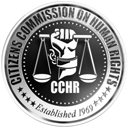
The Citizens Commission on Human Rights International (CCHR) is an anti-psychiatry lobbying organization established in 1969 by the Church of Scientology and psychiatrist Thomas Szasz. Headquartered in Los Angeles, California, its stated mission is to "eradicate abuses committed under the guise of mental health and enact patient and consumer protections." It is regarded by most non-Scientologists as a Scientology front group whose purpose is to push the organization's anti-psychiatry agenda.
19. Bronson Caves
Bronson Canyon, or Bronson Caves, is a section of Griffith Park in Los Angeles that has become known as a filming location for many films and television series, especially Westerns and science fiction, from the early days of motion pictures to the present.
20. Wiltern Theatre and Pellissier Building
The Pellissier Building and adjoining Wiltern Theatre is a 12-story, 155-foot (47 m) Art Deco landmark at the corner of Wilshire Boulevard and Western Avenue in Los Angeles, California. The entire complex is commonly referred to as the Wiltern Center. Clad in a blue-green glazed architectural terra-cotta tile and situated diagonal to the street corner, the complex is considered one of the finest examples of Art Deco architecture in the United States. The Wiltern building is owned privately, and the Wiltern Theatre is operated by Live Nation's Los Angeles division.
21. Academy Museum of Motion Pictures
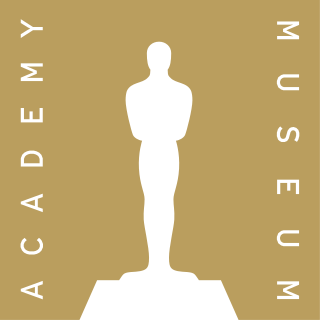
The Academy Museum of Motion Pictures is a film museum opened in 2021 located in Los Angeles, California. The first large-scale museum of its kind in the United States, it houses more than 13 million objects, and is dedicated to the history, science, and cultural impact of the film industry.
Wikipedia: Academy Museum of Motion Pictures (EN), Website, Twitter, Facebook, Instagram, Youtube
22. Urban Light
Urban Light (2008) is a large-scale assemblage sculpture by Chris Burden located at the Wilshire Boulevard entrance to the Los Angeles County Museum of Art (LACMA). The 2008 installation consists of restored street lamps from the 1920s and 1930s. Most of them once lit the streets of Southern California.
23. Los Angeles California Temple
The Los Angeles California Temple, the tenth operating and the second-largest temple operated by the Church of Jesus Christ of Latter-day Saints, is on Santa Monica Boulevard in the Westwood district of Los Angeles, California, United States.
24. SS Lane Victory
SS Lane Victory is an American Victory-class cargo ship used in World War II, the Korean War and Vietnam War. The ship was preserved in 1989 to serve as a museum ship in the San Pedro area of Los Angeles, California. As a rare surviving Victory ship, she was designated a U.S. National Historic Landmark.
25. East West Players
East West Players is an Asian American theatre organization in Los Angeles, founded in 1965. As the nation's first professional Asian American theatre organization, East West Players continues to produce works and educational programs that give voice to the Asian Pacific American experience today.
26. Natural History Museum of Los Angeles County
The Natural History Museum of Los Angeles County is the largest natural and historical museum in the Western United States. The museum is located in Exposition Park, Los Angeles, next to the California Science Center. Its collections include nearly 35 million specimens and artifacts and cover 4.5 billion years of history. This large collection comprises not only of specimens for exhibition, but also vast research collections housed on and offsite.
Wikipedia: Natural History Museum of Los Angeles County (EN), Website
27. Canoga Park Church
The True Jesus Church (TJC) is a non-denominational Christian Church that originated in Beijing, China, during the Pentecostal movement in the early twentieth century. The True Jesus Church is currently one of the largest Christian groups in China and Taiwan, as well as one of the largest independent churches in the world.
28. Southwestern Law School Bullocks Building
Bullocks Wilshire, located at 3050 Wilshire Boulevard in Los Angeles, California, is a 230,000-square-foot (21,000 m2) Art Deco building. The building opened in September 1929 as a luxury department store for owner John G. Bullock. Bullocks Wilshire was also the name of the department store chain of which the Los Angeles store was the flagship; it had seven stores total; Macy's incorporated them into and rebranded them as I. Magnin in 1989, before closing I. Magnin entirely in 1994. The building is currently owned by Southwestern Law School.
29. Petersen Automotive Museum
The Petersen Automotive Museum is an automobile museum located on Wilshire Boulevard along Museum Row in the Miracle Mile neighborhood of Los Angeles. One of the world's largest collections, the Petersen Automotive Museum is a nonprofit organization specializing in automobile history and related educational programs.
30. California African American Museum
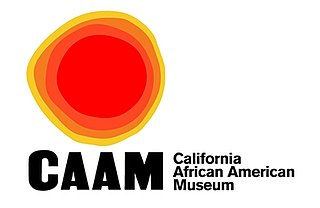
The California African American Museum (CAAM) is a museum located in Exposition Park, Los Angeles, next to the California Science Center. The museum focuses on enrichment and education on the cultural heritage and history of African Americans with a focus on California and western United States.
31. Autry Museum of the American West
The Autry Museum of the American West is a museum in Los Angeles, California, dedicated to exploring an inclusive history of the American West. Founded in 1988, the museum presents a wide range of exhibitions and public programs, including lectures, film, theater, festivals, family events, and music, and performs scholarship, research, and educational outreach. It attracts about 150,000 visitors annually.
32. Dorothy Chandler Pavilion
The Dorothy Chandler Pavilion is one of the halls in the Los Angeles Music Center, which is one of the largest performing arts centers in the United States. The Music Center's other halls include the Mark Taper Forum, Ahmanson Theatre, and Walt Disney Concert Hall.
33. Avila Adobe
The Ávila Adobe, built in 1818 by Francisco Ávila, is the oldest standing residence in the city of Los Angeles, California. Avila Adobe is located in the paseo of historic Olvera Street, a part of the Los Angeles Plaza Historic District, a California State Historic Park. The building itself is registered as California Historical Landmark #145, while the entire historic district is listed both on the National Register of Historic Places and as a Los Angeles Historic-Cultural Monument.
34. Tommy Trojan
Tommy Trojan, officially known as the Trojan Shrine, is one of the most recognizable figures of school pride at the University of Southern California in Los Angeles, California, United States. The life-size bronze statue of a Trojan warrior stands in the center of campus and serves as a popular meeting spot, as well as a centerpiece for a number of campus events. It is the most popular unofficial mascot of the university.
35. Great Wall of Los Angeles
The Great Wall of Los Angeles is a 1978 mural designed by Judith Baca and executed with the help of over 400 community youth and artists coordinated by the Social and Public Art Resource Center (SPARC). The mural, on the concrete sides of the Tujunga Wash in the San Fernando Valley was Baca's first mural and SPARC's first public art project. Under the official title of The History of California, it was listed on the National Register of Historic Places in 2017.
36. The Broad Museum
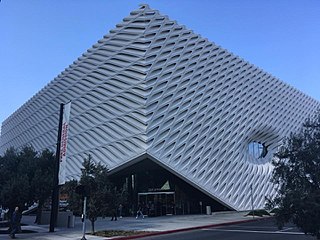
The Broad is a contemporary art museum on Grand Avenue in Downtown Los Angeles. The museum is named for philanthropists Eli and Edythe Broad, who financed the $140 million building that houses the Broad art collections. It offers free general admission to its permanent collection galleries. However, not all of its events are free and admission prices may vary by exhibit and/or by event. It opened on September 20, 2015.
37. Venice Canal Historic District
The Venice Canal Historic District is embedded in the residential Venice suburb of Los Angeles, California. The historic district is noteworthy for possessing man-made wetland canals, built in 1905 by developer Abbot Kinney as part of his Venice of America. Kinney sought to recreate the appearance and feel of Venice, Italy, in coastal Los Angeles County. The names of the canals were given by Abbot Kinney as follows: Aldebaran Canal, Altair Canal, Cabrillo Canal, Coral Canal, Grand Canal, Lion Canal and Venus Canal.
38. Breed Street Shul
Breed Street Shul, also known as Congregation Talmud Torah of Los Angeles or Breed Street Synagogue, is a former Orthodox Jewish synagogue in the Boyle Heights section of Los Angeles, California, in the United States. It was the largest Orthodox synagogue west of Chicago from 1915 to 1951, and is listed in the National Register of Historic Places.
39. Mildred E. Mathias Botanical Garden
The Mathias Botanical Garden is a 7-acre (2.8 ha) botanical garden with over 3,000 species of plants, located on the southeastern corner of the University of California, Los Angeles (UCLA) campus. It is named after Mildred Esther Mathias Hassler (1906–1995), a noted American botanist. The director is Victoria Sork. It is also the only free public botanical garden in the Greater Los Angeles area.
Wikipedia: Mildred E. Mathias Botanical Garden (EN), Website
40. Bolton Hall
Bolton Hall is a historic American Craftsman-era stone building in Tujunga, Los Angeles, California. Built in 1913, Bolton Hall was originally used as a community center for the utopian community of Los Terrenitos. From 1920 until 1957, it was used as an American Legion hall, the San Fernando Valley's second public library, Tujunga City Hall, and a jail. In 1957, the building was closed. For more than 20 years, Bolton Hall remained vacant and was the subject of debates over demolition and restoration. Since 1980, the building has been operated by the Little Landers Historical Society as a local history museum.
41. Levitated Mass
Levitated Mass is a 2012 large-scale public art sculpture by Michael Heizer at Resnick North Lawn at the Los Angeles County Museum of Art (LACMA). The installation consists of a 340-ton boulder sculpture placed above a 456-foot viewing pathway to accommodate 360-degree viewing. The nature, expense and scale of the installation attracted discussion within the public art world, and its notable 106-mile transit from the Jurupa Valley Quarry in Riverside County was widely covered by the media.
42. Go For Broke Monument
The Go for Broke Monument in Little Tokyo, Los Angeles, California, commemorates Japanese Americans who served in the United States Army during World War II. It was created by Los Angeles architect Roger M. Yanagita whose winning design was selected over 138 other submissions from around the world.
43. Banning Residence Museum
Banning House, also known as the General Phineas Banning Residence Museum, is a historic Greek Revival-Victorian home in the Wilmington section of Los Angeles, California. Built in 1863 by Phineas Banning near the original San Pedro Bay, it remained in the Banning family until 1925 and has been owned by the City of Los Angeles since 1927. The home, barn and gardens are now operated as a museum. The Banning House property, also known as Banning Park, has been designated as a city Los Angeles Historic-Cultural Monument and state California Historical Landmark and has been federally listed on the National Register of Historic Places.
44. Los Angeles Fire Department Museum and Memorial
The Los Angeles Fire Department Museum and Memorial is located at Old Engine Co. No. 27, also known as Fire Station No. 27, on Cahuenga Boulevard in Hollywood. The museum houses old fire engines and fire apparatus, some dating from the 1880s. The museum also houses a reference library and fire safety learning center. The building was named a Los Angeles Cultural-Heritage Monument in 1976 and was listed in the National Register of Historic Places in 1985. The Fallen Firefighters Memorial in front of the station consists of a memorial wall listing all of the Los Angeles firefighters who have died in the line of duty and five life-size statues of firefighters.
Wikipedia: Los Angeles Fire Department Museum and Memorial (EN)
45. El Capitan Entertainment Centre
Hollywood Masonic Temple, now known as the El Capitan Entertainment Centre and formerly known as Masonic Convention Hall, is a building on Hollywood Boulevard in the Hollywood neighborhood of Los Angeles, California, U.S., that was listed on the National Register of Historic Places in 1985.
46. Madame Tussaud's
Madame Tussauds Hollywood is a wax museum and tourist attraction located on Hollywood Boulevard in Hollywood, California. It is the ninth location for the Tussauds franchise, which was set up by sculptor Marie Tussaud, and is located just west of the TCL Chinese Theatre. Madame Tussauds is owned and operated by Merlin Entertainments.
47. Ralphs Grocery Store
Ralphs Grocery Store is a historic building in the Westwood Village section of Westwood, Los Angeles, California. Built in 1929 as a Ralphs Grocery Store, it was one of the original six buildings in the Westwood Village development. The building was noted for its cylindrical rotunda capped by a low saucer dome, with a pediment over the entrance and arcaded wings extending north and east. It was photographed by Ansel Adams in 1940, declared a Historic-Cultural Monument in 1988, and listed on the National Register of Historic Places in 1992.
Wikipedia: Ralphs Grocery Store (Los Angeles, California) (EN)
48. Thien Hau Temple
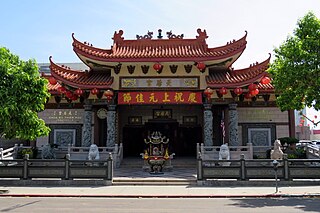
The Thien Hau Temple is a Chinese temple located in Los Angeles's Chinatown in California, dedicated to the ocean goddess Mazu. It is one of the more popular areas for worship and tourism among Asian residents in the Los Angeles area. In addition to Mazu, the temple also venerates the martial deity of justice, Guan Sheng Di Jun (關聖帝君) and the wealth deity Fu De Zheng Shen (福德正神).
49. Neutra Studio and Residences (VDL Research House)
Neutra VDL Studio and Residences, the home of architect Richard Neutra, is located in Los Angeles, California. It is also known as the Neutra Research House, the Van der Leeuw House, the Richard and Dion Neutra VDL Research House II, or the Richard and Dion Neutra VDL Research Houses and Studio. It was designed by Richard Neutra and his son Dion Neutra. The house is currently owned by California State Polytechnic University, Pomona, and is maintained by its College of Environmental Design. The property was added to the National Register of Historic Places in 2009, and was designated as a National Historic Landmark in 2016.
50. Hollywood Station Los Angeles Post Office
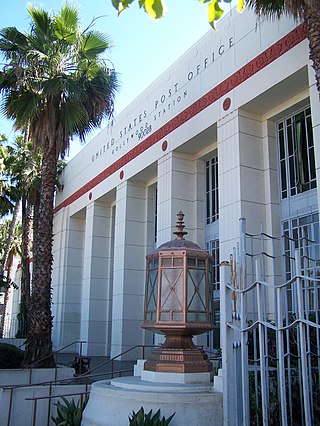
The United States Post Office in Hollywood, Los Angeles, California, also known as Hollywood Station, is an active U.S. post office located at 1615 Wilcox, between Sunset and Hollywood Boulevards. It is on the National Register of Historic Places.
Wikipedia: United States Post Office (Hollywood, Los Angeles) (EN)
51. Homer Laughlin Building
The Homer Laughlin Building, at 317 South Broadway in Downtown Los Angeles, is a landmark building best known for its ground floor tenant the Grand Central Market, the city's largest and oldest public market that sees 2 million visitors a year.
52. Saint Brendan Roman Catholic Church

St. Brendan Catholic Church is a Catholic church in the Roman Catholic Archdiocese of Los Angeles, located in the Windsor Square section of Los Angeles, California. The current Gothic Revival-style church was built in 1927 and has also served as a location for various Hollywood productions.
Wikipedia: St. Brendan Catholic Church, Los Angeles (EN), Website
53. Saint Sophia's Greek Orthodox Cathedral
Saint Sophia Greek Orthodox Cathedral is a Greek Orthodox church built in 1952, in what was then the Greek section of Central Los Angeles, California. It is located at West 15th Street and South Normandie Avenue in the Byzantine-Latino Quarter
54. Pacific Jewish Center
The Pacific Jewish Center, abbreviated as PJC and also known as the Shul on the Beach, is an Orthodox Jewish synagogue located at 505 Ocean Front Walk, in Venice, Los Angeles, California, in the United States. The synagogue is known for its outreach to unaffiliated and disconnected Jews. The Shul remains the last of the synagogues built in Venice during the first part of the 20th century. Although an Orthodox synagogue, worshippers who identify themselves as many different denominations are all welcomed when attending services and other events due to its location in an eclectic neighborhood.
55. Heritage Square
Heritage Square Museum is a living history and open-air architecture museum located beside the Arroyo Seco Parkway in the Montecito Heights neighborhood of Los Angeles, California, in the southern Arroyo Seco area. The living history museum shows the story of development in Southern California through historical architectural examples.
56. Second Church of Christ, Scientist
Second Church of Christ, Scientist is a historic former Christian Science church building located at 948 West Adams Boulevard. It is located in the North University Park neighborhood in the West Adams district of Los Angeles, California. It is now the Art of Living Center Los Angeles.
Wikipedia: Second Church of Christ, Scientist (Los Angeles) (EN)
57. LA Live Steamers
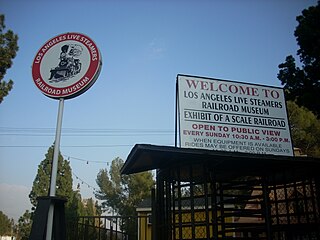
The Los Angeles Live Steamers Railroad Museum (LALSRM) is a non-profit public-benefit corporation founded in 1956 by live steam enthusiasts for the purpose of educating the public about railroad history and lore, and to promote live steam and scale model railroad technology. The museum is located in Griffith Park in Los Angeles, California and is open from 11 a.m. to 3 p.m. every Sunday weather permitting. In 1956, all of the model locomotives were steam-powered, hence the name "Live Steamers". Over the years, gasoline-powered models of diesel locomotives and battery-electric locomotives and trolleys have also become popular. The museum operates a 7+1⁄2 in gauge miniature railway on which these locomotives pull trains that the public can ride.
Wikipedia: Los Angeles Live Steamers Railroad Museum (EN), Website
58. USPO Terminal Annex
The United States Post Office – Los Angeles Terminal Annex, also known simply as Terminal Annex, located at 900 North Alameda Street in Los Angeles, California, was the central mail processing facility for Los Angeles, from 1940 to 1989.
59. The Japanese Garden
The Japanese Garden is a 6.5-acre (2.6 ha) public Japanese garden in Los Angeles, located in the Lake Balboa district in the central San Fernando Valley, adjacent to the Van Nuys and Encino neighborhoods. It is specifically on the grounds of the Tillman Water Reclamation Plant adjacent to Woodley Park, in the Sepulveda Basin Recreation Area.
60. Nimoy Theater
The Nimoy Theater, formerly known as Crest, Majestic Crest and Bigfoot Crest Theatre, is a movie theatre located in the Westwood neighborhood of Los Angeles, California. It was founded as the UCLAN in 1941, and was built for live performances but switched to a newsreel cinema during World War II. Through ownership changes, it has been known at various times as UCLAN Theatre, Crest Theatre, and Metro Theatre. The original 500-seat art deco style theater was designed by Arthur W. Hawes.
61. Lummis Home
Lummis House, also known as El Alisal, is a Rustic American Craftsman stone house built by Charles Fletcher Lummis in the late 19th and early 20th centuries. Located on the edge of Arroyo Seco in northeast Los Angeles, California, the house's name means "alder grove" in Spanish.
62. Los Angeles Light
Los Angeles Harbor Light, also known as Angels Gate Light, is a lighthouse in California, United States, at San Pedro Breakwater in Los Angeles Harbor, California. The lighthouse is listed on the National Register of Historic Places. It is listed as Los Angeles Light in the USCG Lights list. It is the only lighthouse in the world that emits an emerald-colored light.
63. Saint Thomas the Apostle Roman Catholic Church
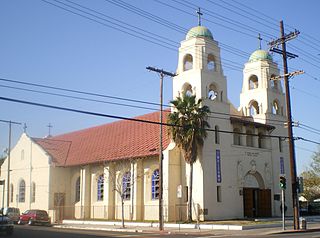
St. Thomas the Apostle Catholic Church is a Roman Catholic church and parish in the Los Angeles Archdiocese, Our Lady of the Angels Pastoral Region. The church is located at 2727 W. Pico Boulevard in the Byzantine-Latino Quarter of Los Angeles, California. The Mission Revival style church was built in 1904.
Wikipedia: St. Thomas the Apostle Catholic Church (Los Angeles) (EN)
64. Velveteria: The Museum of Velvet Art
Velveteria: The Museum of Velvet Art was a museum dedicated to paintings on velvet.established in 2005 in Portland Oregon and relocated in 2013 to Los Angeles, California. In Los Angeles it was formally known as Velveteria Epicenter of Art Fighting Cultural Deprivation. The establishment housed hundreds of paintings from founders Caren Anderson and Carl Baldwin's personal collection of over 2,000 pieces, and was reportedly the only one of its kind. The Velveteria closed in Portland in January 2010 due to financial difficulties and the couple's relocation to Southern California. It was reopened in Chinatown, Los Angeles in 2013. It was permanently closed c. 2020-2021 during the COVID pandemic.
65. The Garbutt House
Garbutt House is a 20-room mansion in the Silver Lake section of Los Angeles built from 1926 to 1928 as the residence of Frank A. Garbutt. It was listed in the National Register of Historic Places in 1987.
66. Museum of Death
Museum of Death is a museum with locations on Hollywood Boulevard in Hollywood, Los Angeles, and New Orleans. It was established in June 1995 by J. D. Healy and Catherine Shultz with the museum's stated goal being "to make people happy to be alive."
Wikipedia: Museum of Death (EN), Website, Facebook, Instagram
67. Toyon Canyon Closed Landfill
The Toyon Canyon Landfill is located within Griffith Park in the Los Feliz hillside neighborhood of greater Hollywood in central Los Angeles, California in the Santa Monica Mountains. The landfill began filling in 1957 and ended in 1985. A lawsuit in 1959 attempted to stop the project but was unsuccessful. There was a move in the 1980s to expand the landfill into Royce's Canyon to the northwest, but that was defeated.
68. Henry Fonda Theater
The Fonda Theatre is a concert venue located on Hollywood Boulevard in Los Angeles, California. Designed in the Spanish Colonial Revival Style, the 31,000-square-foot (2,900 m2) theater has hosted live events, films, and radio broadcasts.
Wikipedia: The Fonda Theatre (EN), Website, Twitter, Facebook, Instagram
69. Mission Point
Mission Point, better known as "Mission Peak" to locals, is a spur of Oat Mountain in Los Angeles County, Southern California. At 2,771 feet (845 m) high, it is the second highest peak of the Santa Susana Mountains after Oat Mountain.
70. Ivy Substation
Ivy Substation is a 99-seat theatre in Culver City, California which formerly housed power equipment for the nearby electric railways and Ivy station. It was listed on the National Register of Historic Places in 1981.
71. Jack Warner Estate
The Jack Warner Estate is a property in Beverly Hills, California 9.4-acre (3.8 ha) that was developed by Jack L. Warner of Warner Bros. who had first bought 3 acres of farmland here in 1926, expanding it over the years to 1937. A preserved 'Golden Age of Hollywood' estate, it centers around a large Neo-Georgian mansion. In February 2020, it was reported that the estate had been sold by David Geffen to Jeff Bezos for $165 million, a record deal for residential property in Los Angeles.
72. LA Plaza De Culturas Y Artes
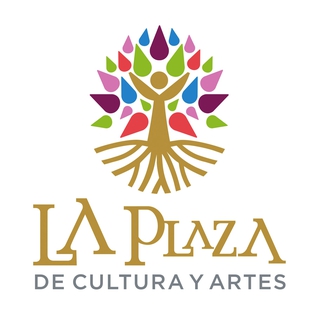
LA Plaza de Cultura y Artes, also called LA Plaza, is a Mexican-American museum and cultural center in Los Angeles, California, USA that opened in April 2011. Housed in two historic buildings in downtown Los Angeles it includes a museum, a 30,000-square-foot outdoor space with a performance stage, an edible garden, and LA Cocina de Gloria Molina, a teaching kitchen and flexible event space.
73. historic ranch house / park office
Shadow Ranch is a historic ranch house, built from 1869-1872 using adobe and redwood lumber, on the original Workman Ranch in the western San Fernando Valley of Los Angeles, California. For much of the 20th century it was in Canoga Park, but it is now within the boundaries of the West Hills community. The park is also allegedly haunted, owing to its grim history, and has been featured on Ghost Adventures.
74. Janss Dome
The Janss Investment Company Building, also known as the Janss Dome, is a historic building in Westwood, Los Angeles, California, in the Westwood Village. The building is located at the five-way intersection of Westwood Boulevard, Kinross Avenue, and Broxton Avenue.
75. Tuna Canyon Detention Station
Tuna Canyon Detention Station was a temporary detention facility used for holding hundreds of Japanese Americans who were considered enemy aliens by the U.S. government and to be risks to the nation's security. The detention camp was located in Tujunga at a former Civilian Conservation (CCC) Camp, constructed in 1933. The camp was converted into the Tuna Canyon Detention Station just after the bombing of Pearl Harbor. Administered by the Department of Justice, it opened on December 16, 1941, when the first group of detainees arrived from various Southern California towns and cities. Tuna Canyon had a capacity of 300, and until its closing in October 31, 1943, over 2,000 Japanese, German, and Italian immigrants, Japanese Peruvians, and others were imprisoned there. Most were transferred to other DOJ facilities like Fort Missoula, Fort Lincoln and Santa Fe. The site was used as a probation school after the war.
76. St. Leon Armenian Cathedral
St. Leon Armenian Cathedral in the city of Burbank, California, is an Armenian Apostolic cathedral that was built in 2010. The cathedral is home to the Armenian community in the Southern California area and is located directly across the street to Woodbury University. The cathedral was consecrated by HH Karekin II, Catholicos of All Armenians. The cathedral falls on the northern side of Glenoaks Boulevard and is visible from the Interstate 5 freeway.
77. African American Firefighter Museum
Fire Station No. 30, Engine Company No. 30 is a historic fire station and engine company in the South Los Angeles area of Los Angeles, California. Built in 1913, its white firemen served a predominantly white neighborhood.
Wikipedia: Fire Station No. 30, Engine Company No. 30 (EN), Website
78. Los Angeles Municipal Art Gallery
The Los Angeles Municipal Art Gallery is located in the Barnsdall Art Park in Los Angeles, California. It focuses on the arts and artists of Southern California. The gallery was first established in 1954.
79. Saint James Episcopal Church
St. James' Episcopal Church, or St. James' in-the-City, as it is commonly called, to distinguish it from the St. James' Episcopal Church in South Pasadena, is a historic Episcopal church, located in the Wilshire Center area of Los Angeles, California, between Koreatown and Hancock Park. St. James' in-the-City Episcopal Church is part of the Episcopal Diocese of Los Angeles.
Wikipedia: St. James' Episcopal Church (Los Angeles, California) (EN)
80. Magic Johnson Park
Magic Johnson Park is a 104-acre (420,000 m2) recreation area operated by Los Angeles County Parks and Recreation in the Willowbrook neighborhood. It is named after Los Angeles Lakers star and activist Earvin "Magic" Johnson.
81. Cleveland Park / Old Trapper's
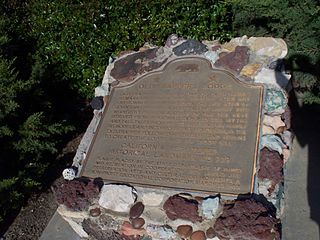
The Old Trapper's Lodge is a California Folk Art display started in 1951 in the United States. It was designated a California Historical Landmark on March 25, 1985. The Old Trapper's Lodge art work is located in Los Angeles Pierce College's Cleveland Park at 6201 Winnetka Avenue in Woodland Hills, Los Angeles in Los Angeles County. The folk art is a life-size sculpture made by John Ehn (1897-1981), a self-taught artist who loved Old West culture. Ehn used his family as models and turned them into life-size outsider art Old West characters.
82. San Vicente Mountain Park
San Vicente Mountain Park is a former Nike Missile Radar/Control Site in Southern California. The site is located on land owned by the city of Los Angeles above the Encino Reservoir along the unpaved portion of Mulholland Drive west of the 405 freeway.
83. Augustus F. Hawkins Natural Park
Augustus F. Hawkins Park is a 8.5-acre (3.4 ha) public park south of downtown Los Angeles, California in the United States. The park includes a nature center and plantings donated by the Huntington Gardens in San Marino. Full-size oak trees were trucked to the site from Ramona. Plantings native to California are prioritized, including sycamores and willows adjacent to the constructed wetland.
84. Los Angeles Sister Cities Monument
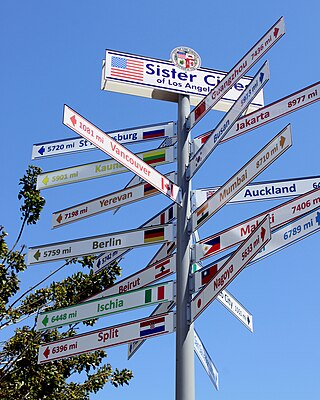
The Los Angeles Sister Cities Monument, also known as the Sister Cities of Los Angeles Monument, is a fingerpost and monument in Los Angeles' Civic Center, in the U.S. state of California. The monument was designed by Brigid LaBonge in 2002. Installed at the corner of 1st and Main, in front of South City Hall and across from Los Angeles City Hall, the fingerpost displays the names and distances of Los Angeles' sister cities.
85. Cahuenga Branch Los Angeles Public Library
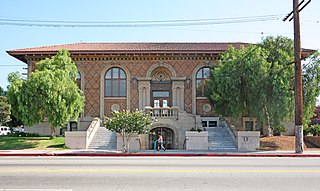
Cahuenga Branch is the third oldest branch library facility in the Los Angeles Public Library system. Located at 4591 Santa Monica Boulevard in the East Hollywood section of Los Angeles, it was built in 1916 with a grant from Andrew Carnegie. One of three surviving Carnegie libraries in Los Angeles, it has been designated as a Historic-Cultural Monument and listed in the National Register of Historic Places.
86. Kuruvungna Springs
The Tongva Sacred Springs are a group of springs located on the campus of University High School in Los Angeles, California. The springs, called Koruuvanga by the native Gabrieleno Tongva people, were used as a source of natural fresh water by the Tongva people since at least the 5th century BC and continue to produce 22,000–25,000 US gallons (83,000–95,000 L) of water a day. The springs are also sometimes referred to as the Gabrieleno-Tongva Springs, the Tongva Holy Springs, and the Sacred Springs.
87. Grauman's Million Dollar Theatre
The Million Dollar Theatre at 307 S. Broadway in Downtown Los Angeles is one of the first movie palaces built in the United States. It opened in 1917 with the premiere of William S. Hart's The Silent Man. It's the northernmost of the collection of historical movie palaces in the Broadway Theater District and stands directly across from the landmark Bradbury Building. The theater is listed in the National Register of Historic Places.
Share
How likely are you to recommend us?
Disclaimer Please be aware of your surroundings and do not enter private property. We are not liable for any damages that occur during the tours.
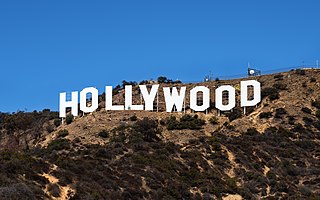
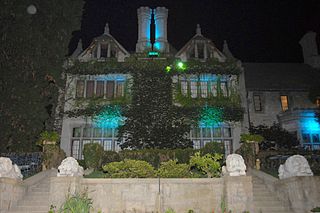
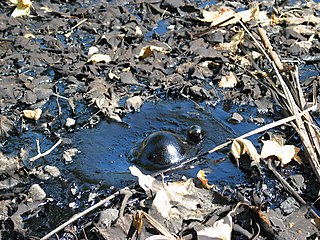
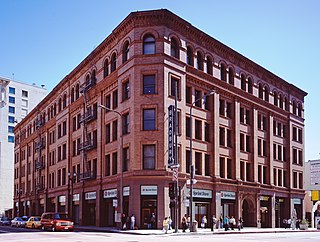
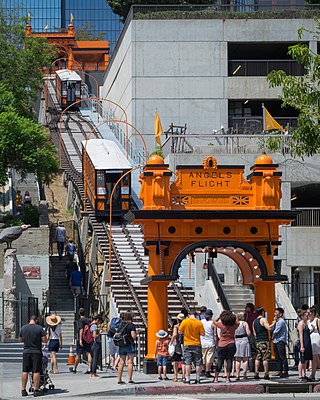
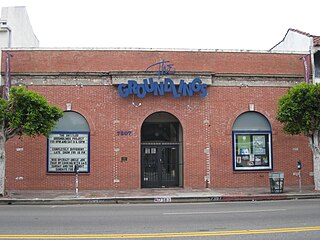
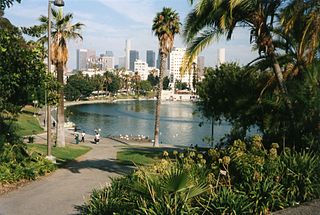

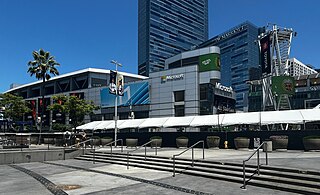


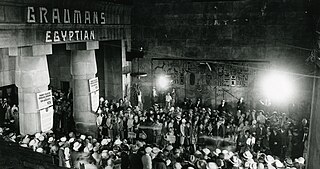
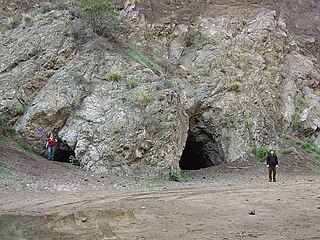
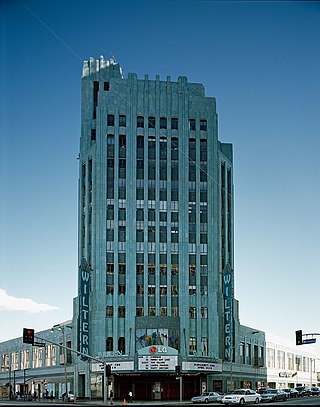
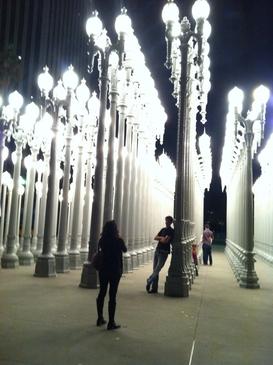

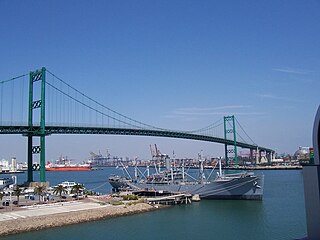
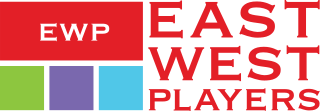

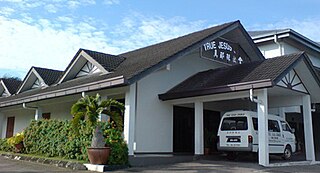
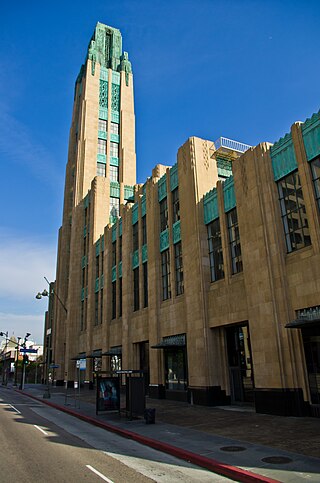
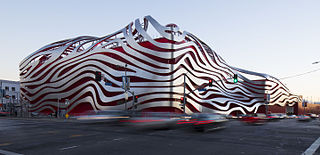
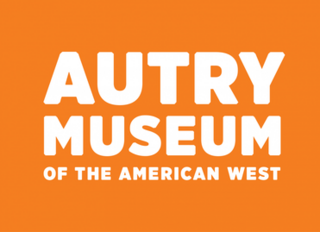

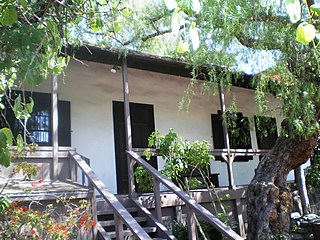
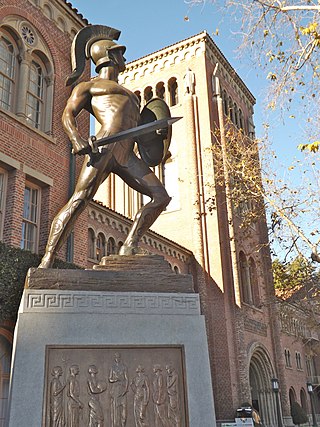
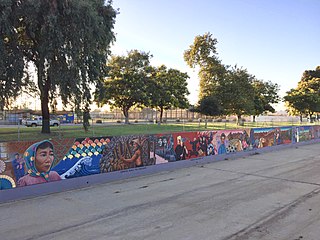
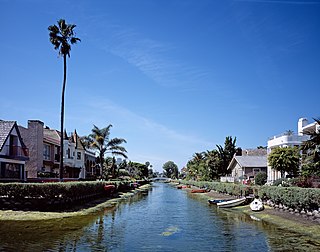
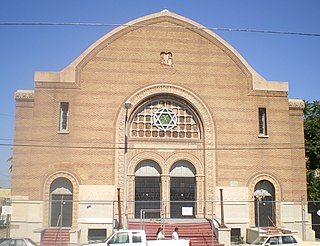
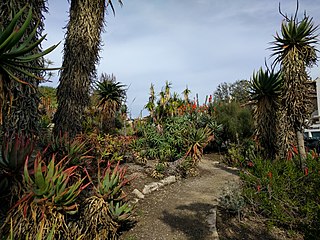
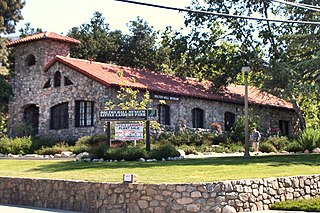
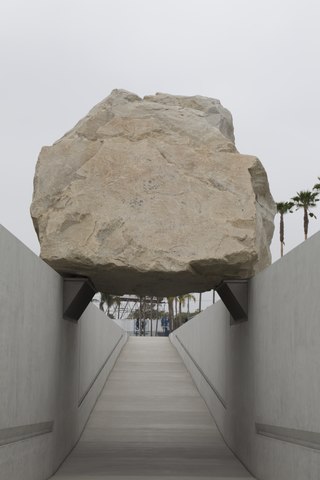


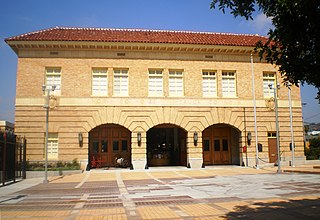
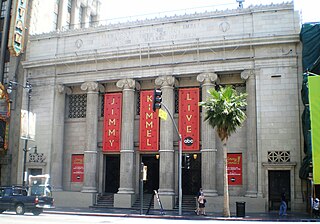

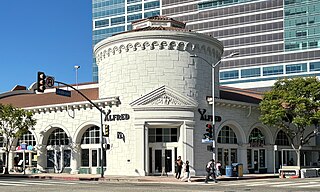
.jpg)
